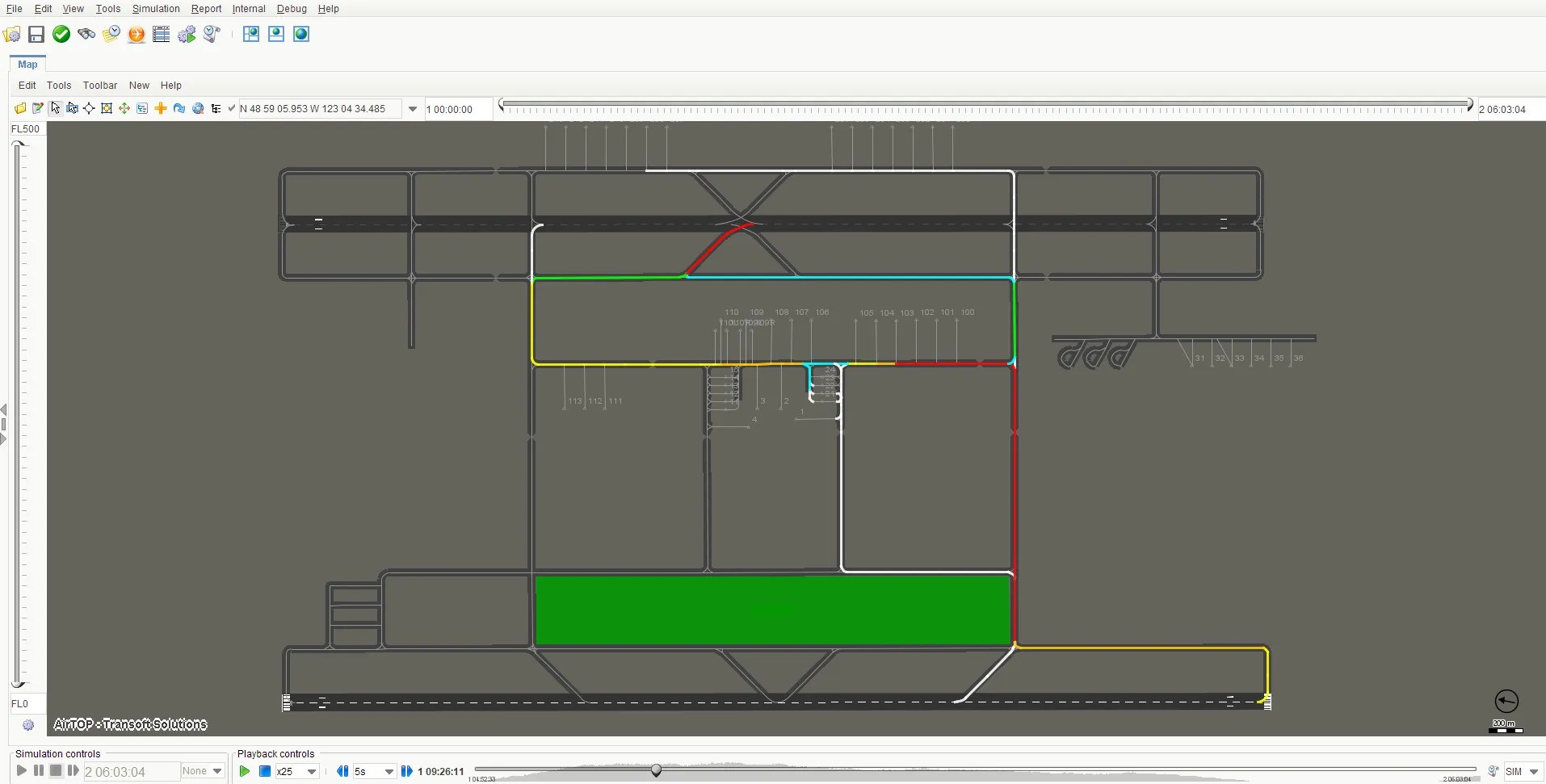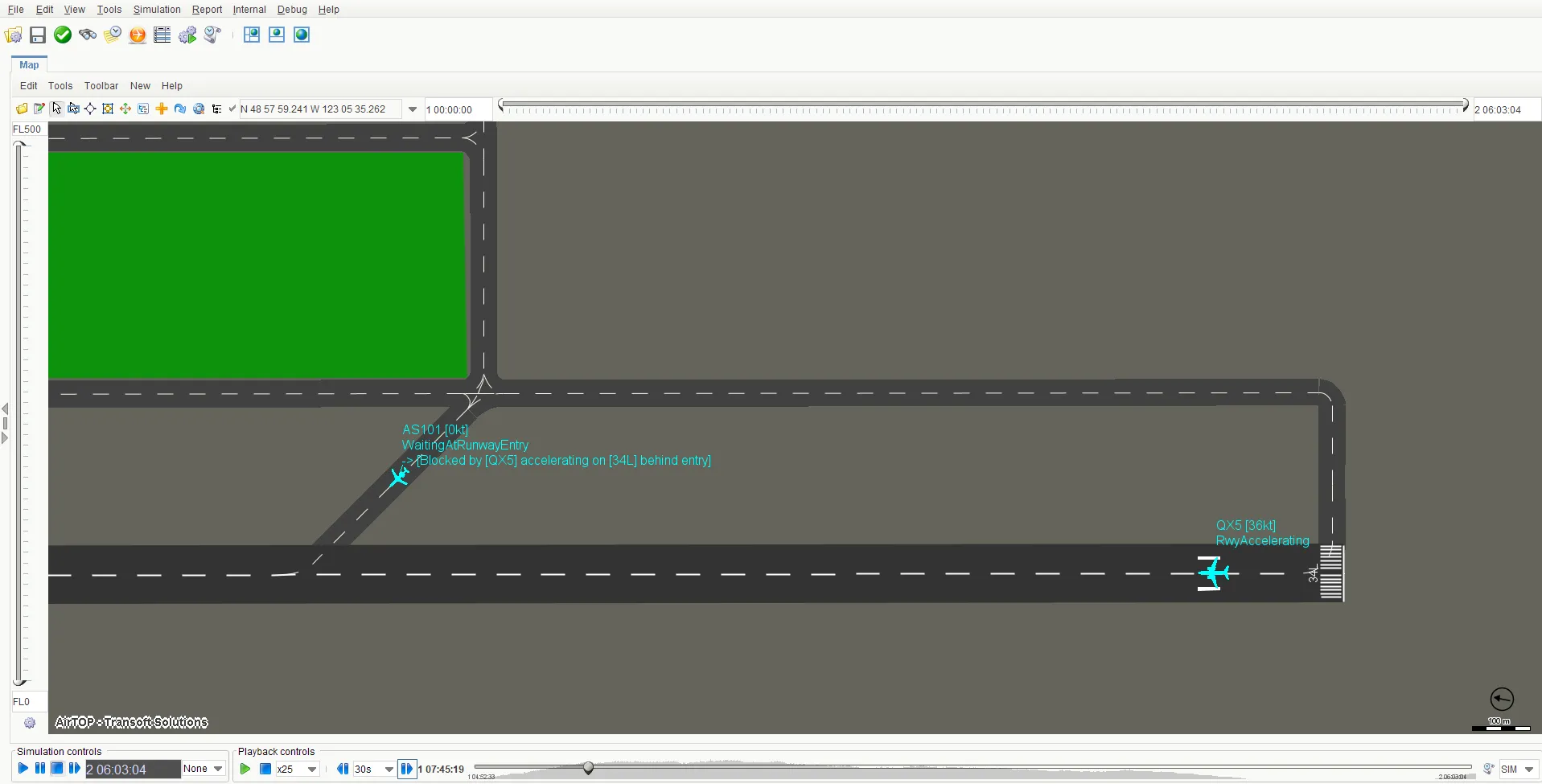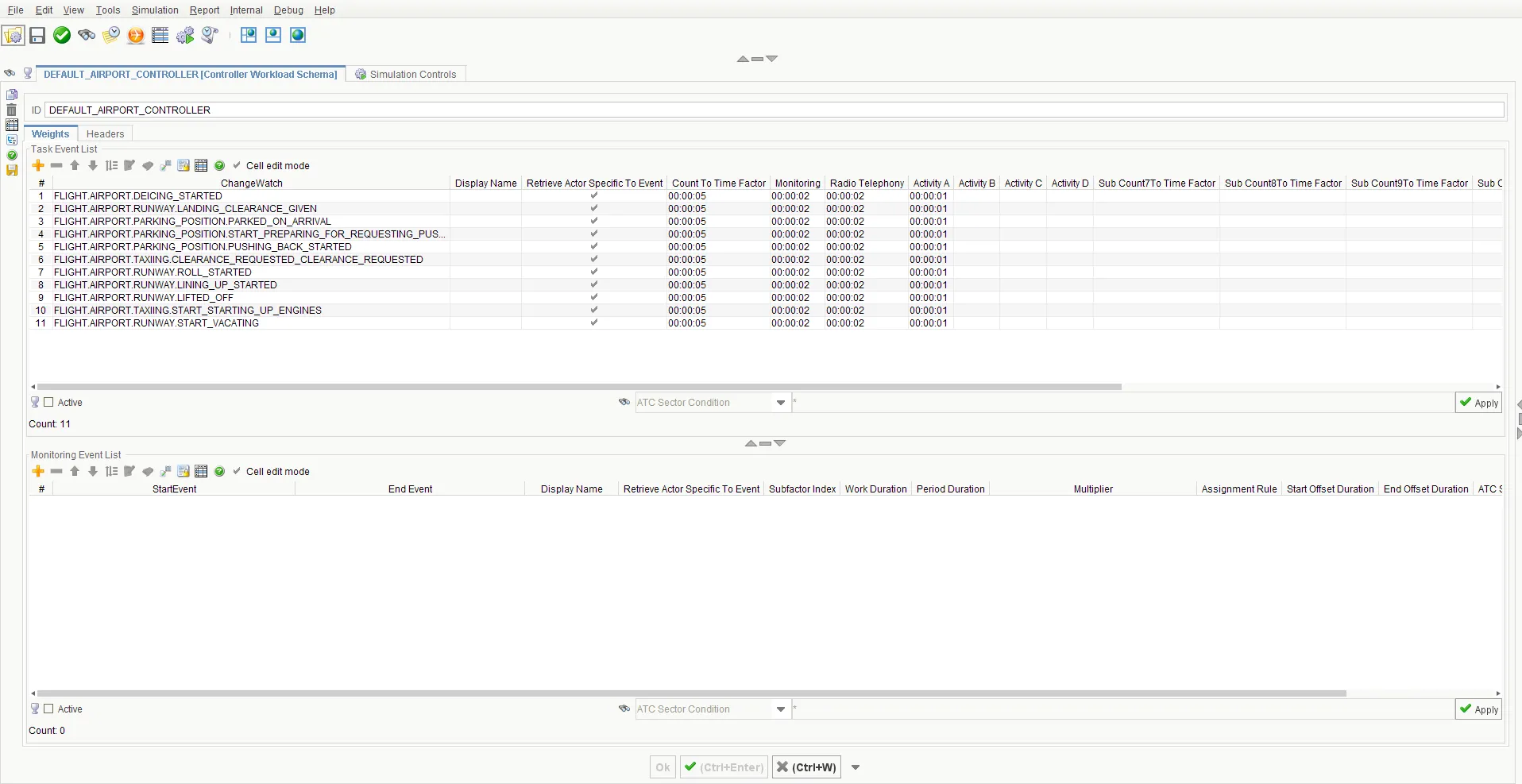Study aircraft operations, review performance indicators and test scenarios to optimize procedures, validate designs and improve capacity.
Vendor
Transoft Solutions
Company Website




Assess and Improve Airport Capacity
Redefining aircraft taxi routes, closing infrastructure for maintenance purposes, or changing runway modes of operations can result in operational bottlenecks that cause delays and affect the bottom line. AirTOP Airside Aircraft allows you to visualize potential choke points and test alternative scenarios to assess and improve airport capacity. Using the integrated 2D and 3D graphical user interface, you can create, simulate, and compare detailed airside layouts, along with performance indicators such as fuel-burn, taxi-time, or runway queues. Often used by airport authorities, operators and aviation consultants.
What Makes AirTOP Airside Aircraft Unique
Improve operations
Supports rule-based modeling of runway crossing, turn-around management, de-icing procedures, parking and gate allocation, taxi flow control and more.
Leverage applications
Visualize the resulting parking positions allocation plan with the built-in Gantt chart view.
Import data easily
Import and graphical editing tools allow for fast and precise modeling of airport ground layouts.
Assess key performance indicators
Extract performance indicators such as fuel-burn, taxi-time or runway queues.
Features
Optimize Airport Airside Aircraft Operations
The AirTOP Airside Aircraft module allows airport authorities, operators, consultants, and other stakeholders to assess and improve airport capacity by modeling airside aircraft operations.
- Stand/gate allocation
- Push/pull procedures, including taxibot/eTaxi concepts
- Taxi flow control
- Runway entry and exit selection
- Single and multiple runway sequencing
- De-icing procedures
Efficient Graphical Editing of Airport Models
Import and graphical editing tools allow for fast and precise modeling of airport ground layouts. The supported import of various file formats (DXF, SHP and POL files) in addition to satellite imagery allows users to visualize airport layout designs as a background of the map view, facilitating rapid and efficient model creation and editing.
Model Airside Infrastructure Functionality
AirTOP’s Airside Aircraft module features all airside infrastructure components, such as runway entries/exits/crossings, stop bars, taxiway segments, gates, remote and long-term parking positions, aprons, hangars, de-icing stations, and more. These infrastructure components and their associated usage restrictions can be modeled in detail.
Static and Dynamic Stand Allocation
Users can import stand allocation plans or generate plans using a pre-allocation tool, considering various constraints and preferences. An interactive, highly customizable Gantt chart view facilitates inspection and modification of the allocation plan. The Gantt chart also allows to compare the allocation plan against the rule-based, dynamic allocation of the simulation.
Comprehensive Departure Management
AirTOP Airside Aircraft can realistically model departure management tasks, such as accepting departure taxiing aircraft inside a controller’s area of responsibility, building an optimized take-off sequence, and controlling aircraft to ensure the sequence is respected. A Departure Manager (DMAN) system generating an optimized take-off sequence is supported and can be configurated to model pushback-time or taxi-flow control.
Ground Movement Modeling
The powerful AirTOP simulation engine lets the user easily define operational rules and procedures, such as runway entry or exit selection, runway usage in mixed mode or segregated mode, runway crossing and lining-up procedures, stand assignment, use of stand-off positions, turnaround management, towing operations, de-icing procedures (at the gate or dedicated stations), rerouting, stop-and-wait, inter-arrival or inter-departure separations and many more.
Accurate Assessment of Ground Delays
Ground delays are measured accurately per aircraft and for different phases. They include gate delays, taxi delays, departure runway delays, runway crossing delays, etc. Delay calculation takes realistic aircraft acceleration and deceleration into account, while the aircraft’s movement speed can depend on its phase and location in the airport.
Heatmap Highlighting Bottlenecks in Taxi Flow
AirTOP Airside Aircraft has an in-built capability to produce heatmaps of KPIs related to taxi flow for the visualization and analysis of potential bottlenecks. The number of aircraft movements on taxiways, occupation time, and incurred delays can be visualized separately for departures, arrivals, and towing aircraft. The heatmap is highly customizable and can reflect running time-averages or the total over a full simulation day.
Detailed Controller Workload Modeling
AirTOP Airside Aircraft dynamically simulates controller workload for all controller roles. It provides an overview of the time spent on specific tasks, showing specific events or rolling hour statistics. The highly customizable workload model allows to associate simulation events with tasks like monitoring, radio communication, conflict detection, etc. These events can be related to any clearance requests, the allocation of airport resources to a specific aircraft, the dynamic rerouting of traffic, or the monitoring of different flight phases.